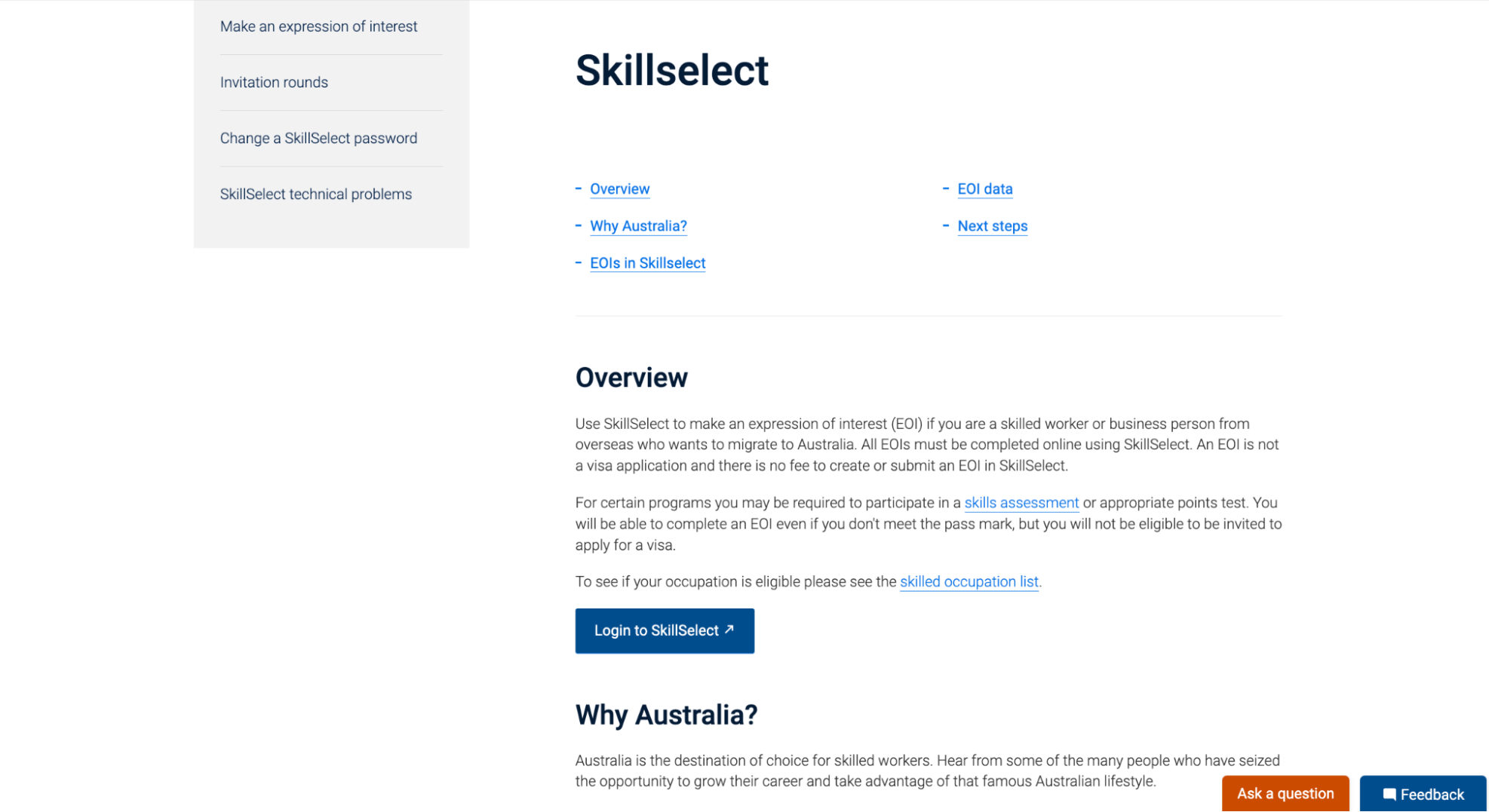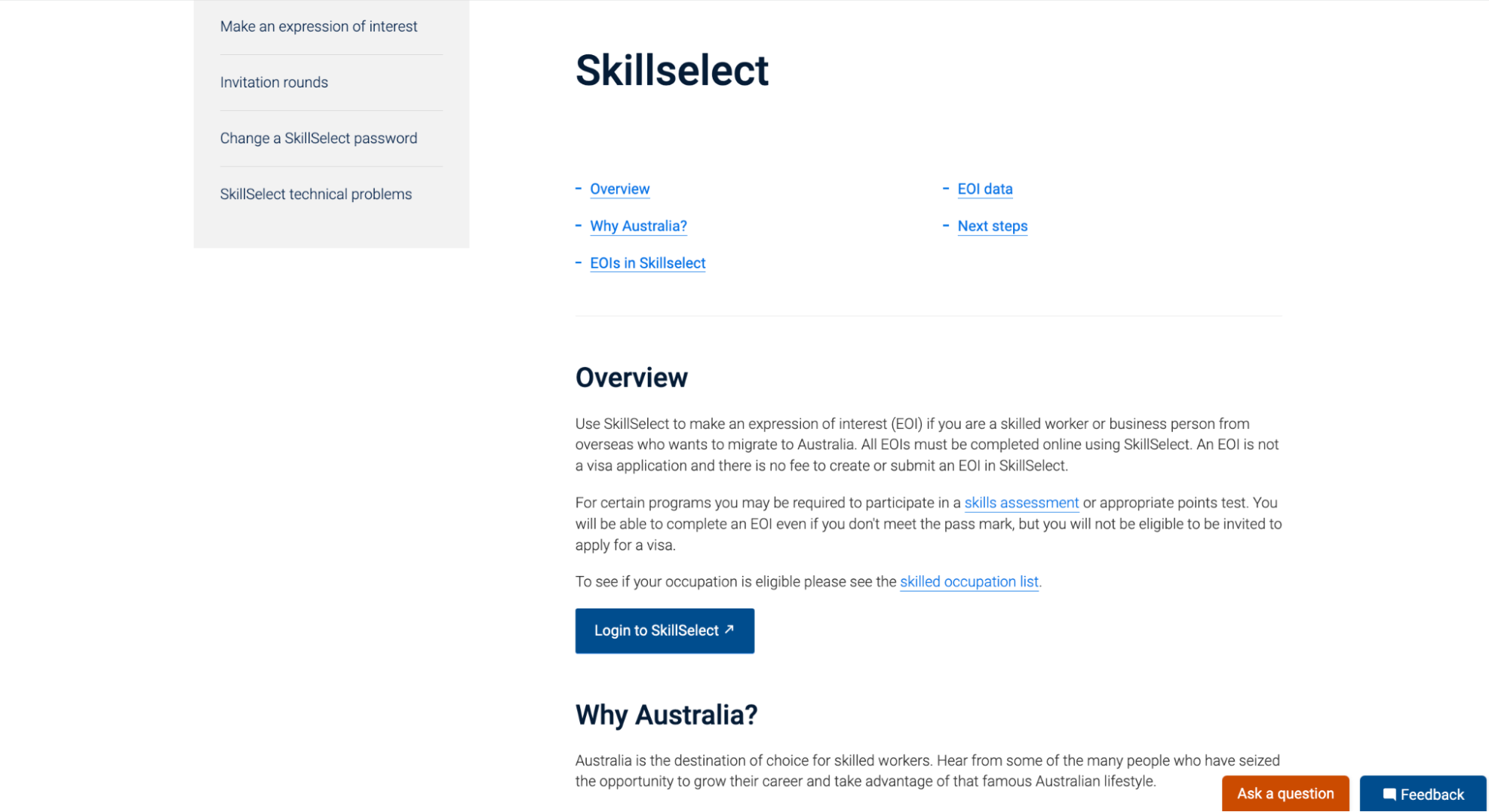As an Indian, you have a great chance of getting your PR approved. Of the endless number of PR applications received in Australia, Indians are in the second position in terms of PR visa holders.
About 21,791 Indian applicants received an Australian PR visa in 2020-21.
An Australian PR allows applicants to settle, work and study in Australia indefinitely, using a point-based immigration system.
The most generous benefit of getting an Australian PR for students is that international students are allowed to apply for Australian citizenship after 4 years of being a PR holder.
However, not all courses in Australia make you eligible to apply for a PR.
Only selected PR courses with applied rules and regulations grant the PR privilege to international students.
Top Benefits of PR in Australia: What’s great about Australian PR?
Australia attracts many international students, skilled workers, and migrants every year.
While you would have heard about the great opportunities attached to it, there are many more benefits attached to the Australian PR.
- Australian PR for students permits you to live in the country indefinitely.
- You will be eligible to sponsor your family members to enter Australia.
- You get access to free treatment at public hospitals and other medical services at subsidized rates.
- By holding a permanent residentship for about 2 years you’re eligible for services offered by Centrelink, a social service system.
- The Australian permanent residency also clears the pathway to permanent citizenship after 4 years for you.
- You can also attend free English language classes provided by the Adult Migrant English Program.
These are some of the many wonderful perks of obtaining an Australian PR.
But, along with these perks, you will have to face a few limitations, such as:
- You cannot have an Australian passport.
- You are not allowed to vote in Australian Government elections unless you enrolled (as a British subject) before 26 January 1984.
- You do not have access to student loans.
- You cannot join the Australian Defence Force.
- Cannot obtain ongoing work in the Australian Government.
- You do not have the automatic right of entry to Australia from overseas travel.
Let us now read more about the best PR courses in Australia.
PR Courses in Australia: A Guide to PR after Masters in Australia
International students in Australia who have been for more than two years and wish to settle in Australia post their studies can apply for a PR (permanent residency).
While applying for Australian PR, it helps to have prior work experience of a minimum of 3 years as these points are counted during your assessment.
Students applying for PR in Australia need to display interest and fulfill the required skill conditions to apply.
However, not all courses might be of merit to apply for PR in Australia.
To obtain a PR after Master’s in Australia, international students can particularly opt for the following type of PR courses:
- Engineering courses
- Trade-related courses
- Medical courses
- Accountancy courses
- Teaching or education courses
- Nursing courses
List of Courses for PR in Australia
| PR Course | Cost | Job Prospects |
| Accountancy | AUD 20,000 – 40,000 | Accountant, finance Manager |
| Automotive | AUD 8,400 – 10,000 | Automotive Electrician, Diesel Motor Mechanic, General Mechanic, Motor Mechanic, |
| Computer and Information Technology | AUD 41,000 – 50,000 | Developer Programmer, Analyst Programmer, Web developer, ICT Support Engineer, Software Tester, Software Engineer, |
| Business | AUD 15,000 – 120,000 | Business Analyst, Project Manager, Chief Marketing Officer, HR Business Partner, Sales Manager |
| Engineering | AUD 44,000 – 52,000 | Aeronautical Engineer, Agricultural Engineer, Civil Engineer, Electrical Engineer, Mechanical Engineer, Industrial Engineer |
| Medicine and Dentistry | AUD 70,000 – 140,000 | Research Assistant, Research Associate, Lecturer, Postdoctoral Fellow |
| Nursing | AUD 42,000 – 70,000 | Midwifery, Nurse Practitioner, Registered Nurse |
| Education and teaching | AUD 20,000 – 45,000 | Primary school Teacher, Secondary School Teacher, special Needs Teacher, Teachers of English Language, University Lecturer, Vocational Education Teacher |
| Building and construction | AUD 14,000 – 70,000 | Bricklayer, Building Inspector, Carpenter, Floor Tiler, construction Project Manager, Construction Estimator, Roof Tiler, Wall Tiler |
The courses mentioned above are listed by ANZSCO and hence eligible for obtaining a PR status through any of these courses.
Eligibility for PR Courses in Australia
International students planning to stay back and apply for PR after masters in Australia must satisfy these conditions.
- Must be a student studying under the Graduate Temporary Visa (subclass 485).
- The applicant’s course duration shouldn’t be less than two years, and the candidate’s courses must be registered under CRICOS.
- IELTS score for PR in Australia is a minimum of 8.0.
- Must be aged below 45 years.
- Only apply to enlisted occupations in the ANZSCO list.
- To obtain a PR in Australia after a master’s you are required to secure 65 points.
Applying for PR in Australia
You must have a Graduate Temporary visa/Post-study work visa (subclass 485) that allows you to stay temporarily in the country.
This helps international students earn extra points for study and work.
It also can turn into an advantage if they get a chance to be sponsored by an employer.
Furthermore, applying for a PR after Master’s in Australia also means getting your skills assessed after you nominate a skill that is listed in the ANZSCO occupations list.
The criteria for skill assessment are different for every occupation but generally depend on qualifications, work experience, English language ability, registration, or a combination of all of the above.

The skill assessment for PR in Australia is graded on a point-based system.
- Each component carries 5 to 20 points, solely based on your experience and proficiencies. For example, a Bachelor’s degree is 15 points and a doctorate degree is awarded 20 points.
- The more points you have, the higher chance you have of qualifying for PR in Australia.
- Another solid point for obtaining a PR in Australia is to have work experience. Work experiences in Australia and overseas are counted for 20 points in the skill assessment.
- In addition to your qualification and employment, you earn points for studying in Australia, having state nominations, and also, employer sponsorships.
- Remember, you need a minimum score of 65 points to obtain permanent residency in Australia.
How to Get PR After Masters in Australia?
To get PR in Australia, it is wise to choose a PR course in Australia when you move abroad.
SelectRight professionals help you choose the best PR courses and job opportunities to earn a good point score.
And as international students follow the steps below to apply for PR in Australia:
Step 1: Check if you are eligible for PR in Australia (as mentioned above).
Step 2: Take a language proficiency test such as IELTS, TOEFL or PTE.
Step 3: Get your Skills assessed on Australia’s official SkillSelect website.

Step 4: Next, register an expression of interest on the SkillSelect portal. To register on the portal, you will need to:
- Create your profile in the Skill Select Portal.
- Sign in
- Select your visa type
- Enter your IELTS Score
- Enter your Educational Qualifications
- Enter your Work Experience
- Submit your Declaration form
Step 5: Once your form is submitted, you receive an Invitation to Apply (ITA).
Step 6: On receiving the ITA, you can submit the PR form within 60 days on the home affairs website of Australia.
While submitting your PR form you will need all the necessary documents including your character and health certificates.

Documents Required to Apply With PR Courses in Australia
We all know the important but tedious task of gathering documents for official purposes. However, here is a quick checklist you can refer to while applying for PR in Australia.
Documents you need to gather for applying to PR in Australia:
- Application form
- Educational credentials/ transcripts for assessment
- Birth certificate
- Character certificate
- Proof of nomination (if applicable)
- IELTS scorecard
- 2 passport-size photographs
- Police clearance certificate
- Business reference letters
The Australian PR has endless benefits for international students and other migrant workers. But, for this, you will need to take PR courses in Australia.
A SelectRight professional can help you grab work opportunities to earn the maximum number of points. Thus, making your PR course for Australia fruitful.
Frequently Asked Questions
Q1. Can I apply for Australian citizenship with PR after my Master’s in Australia?
Ans: Yes, you can apply for citizenship four years after permanent residency in Australia.
Q2. Can I get PR if the course is not mentioned in the list of courses for PR in Australia?
Ans: Not every course in Australia is eligible for a PR. Only the courses listed by ANZSCO are eligible for a PR.
Q3. Which are the best PR courses in Australia?
Ans: Nursing and Midwife, Engineering, Accounting, etc., are a few courses that are best to get a PR in Australia.
Q4. How many points are required to get PR in Australia?
Ans: A minimum of 65 points is required for getting PR in Australia. The higher the points, the more chance an applicant has of getting qualified.
Q5. Which occupation is the best for PR in Australia?
Ans: Skilled occupations including specific jobs, and roles like Doctor, Engineer, Dentist, Social Worker, Mechanical Engineer, Chef, Psychiatrist, etc are suitable for getting PR in Australia.





